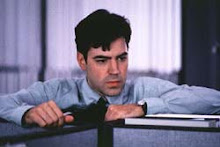George Bernard Shaw
Primary care doctors struggling to survive
Relatively low earnings, rising overhead and overwhelming patient loads are sending veteran physicians into early retirement and driving medical students into better-paying specialties.
By Lisa Girion
December 15, 2008
The morning's last patient, a disabled woman on Medicare, trails her doctor into her office and confides that she doesn't have money for lunch. Tanyech Walford pulls out her billfold and hands her $3. It's money the doctor really doesn't have."I tell patients I'm broke, and they just chuckle," she said. "They don't believe me."
Walford's fashionable medical suite in a sleek black-paneled building in Beverly Hills was hiding a grittier reality: She spent much of her lunch hour that day in her office opening mail -- hoping to find payment checks to help fill the gap between her expenses and her revenue.She hadn't drawn a paycheck for herself since February. On top of that, her practice has cost her $40,000 in personal savings and left her with $15,000 in credit card debt. Walford, 39, also owes $80,000 in medical school loans. She shops at Ross and other discount retailers, and rarely eats out or takes time off."I'm totally stressed out," Walford said. "How can I take care of my patients when I'm that stressed?"
Walford is not alone in her struggle. Relatively low earnings, rising overhead and overwhelming patient loads are sending veteran primary care physicians into early retirement and driving medical students into better-paying specialties, creating what the New England Journal of Medicine recently called a crisis.
Primary care doctors "should be able to leave work thinking not of their income, or of unanswered phone calls, or of test results that they might have overlooked," Boston physician and associate journal editor Thomas H. Lee wrote in the Nov. 12 issue. "They should go home thinking, 'This is what I was meant to do.' "But after five years, Walford couldn't hang on any longer. She closed her office nine days ago."It's sad," said Walford, who has shoulder-length wavy black hair, a cherubic smile and a slight lilt that betrays her Jamaican roots. "I worked really hard. It's a tragedy."The loss of a single physician thrusts hundreds of patients into medical limbo. But the effect is far broader. Experts say the pool of primary care physicians is insufficient to meet the needs of an aging population.
Already, shortages make it difficult to see physicians in swaths of northern and rural California, as well as neighborhoods in South Central Los Angeles and other urban cores.Much of the problem lies in an endangered business model: the one- or two-physician general practice. Such practices are particularly difficult for primary care physicians to maintain because of their relatively slim and declining margins.In her best year, Walford grossed about $360,000, more than enough to cover her overhead and take home a tidy income.
That stands in sharp contrast to this year, when her practice slid into the red.Small general practices afford doctors autonomy to practice medicine as they see fit and can produce strong doctor-patient bonds. But these physicians have little or no clout to leverage better payments with insurers; they have no economy of scale, which makes overhead more burdensome."It's very difficult, even in rich neighborhoods like Beverly Hills, to set up a solo practice," said Richard Scheffler, an economist at UC Berkeley. "The doctor has to pay rent, a nurse, have a bookkeeper, billing systems, computers. All of those fixed costs are very, very hard for a solo practitioner to have and survive."
Dr. Jerry Connell kept his family practice going in Santa Rosa for 29 years. But he closed it in October because his income had slipped to $50,000 a year, even though he had 2,600 patients."I could make more with my Social Security and investments than I could by staying in practice," said Connell, 66.
He didn't bother looking for a buyer because "no one in Sonoma County has been able to find a replacement in five years."Connell sold his equipment, but not to doctors. A biofuels company bought his scales and microscope. A veterinarian bought his laboratory equipment. And a tattoo salon bought his autoclave to sterilize needles.
The economic slowdown is making matters worse. Physician revenues nationwide are falling as patients who have lost jobs or homes stop paying their bills and skip appointments."As people are tightening their belts, they are deferring things they think are a luxury or not absolutely necessary," said Long Beach physician Jeffrey Luther, president of the California Assn. of Family Physicians. "We see people putting off physicals and mammograms and blood tests because they just don't have the cash."Walford's patients began canceling in droves several months ago. Even those who need to monitor chronic conditions like heart disease and diabetes stopped coming in. Of those who did come, many asked to be billed -- even for co-payments as small as $10 -- and then never paid."I love medicine," she said. "But they don't tell you this stuff in medical school. They tell you there's a shortage of doctors."The rest of the article is here:
LA Times Primary Care
We can never be the better for our religion if our neighbor is the worse for it.
ANONYMOUS
Wednesday, December 17, 2008
Subscribe to:
Post Comments (Atom)





No comments:
Post a Comment
You are not entitled to your opinion. You are entitled to your informed opinion. No one is entitled to be ignorant.
Harlan Ellison